India, a land of vibrant cultures, ancient traditions, and architectural wonders, offers countless destinations for travelers seeking adventure, history, and beauty. One of the most popular and accessible travel circuits in India is the Golden Triangle—a route that connects three of the country’s most iconic cities: Delhi, Agra, and Jaipur.
What is the Golden Triangle?
The Golden Triangle is a popular tourist route that connects three cities in North India:
- Delhi – The bustling capital of India, known for its historical landmarks and modern urban vibe.
- Agra – Home to the iconic Taj Mahal, a symbol of love and one of the New Seven Wonders of the World.
- Jaipur – The “Pink City,” known for its royal palaces, forts, and vibrant culture.
These cities form a triangle on the map and offer a perfect introduction to India’s diverse culture, history, and traditions.
Day 1-2: Discovering Delhi – The Heart of India
Your journey begins in Delhi, a city that beautifully blends ancient history with modern-day energy. From Mughal-era architecture to contemporary shopping hubs, Delhi is an exciting and diverse city to explore.
Things to Do in Delhi:
- Red Fort: Start your Delhi adventure at the Red Fort (Lal Qila), a UNESCO World Heritage Site that dates back to the 17th century. Explore the beautiful Mughal architecture and the historical significance of this fort.
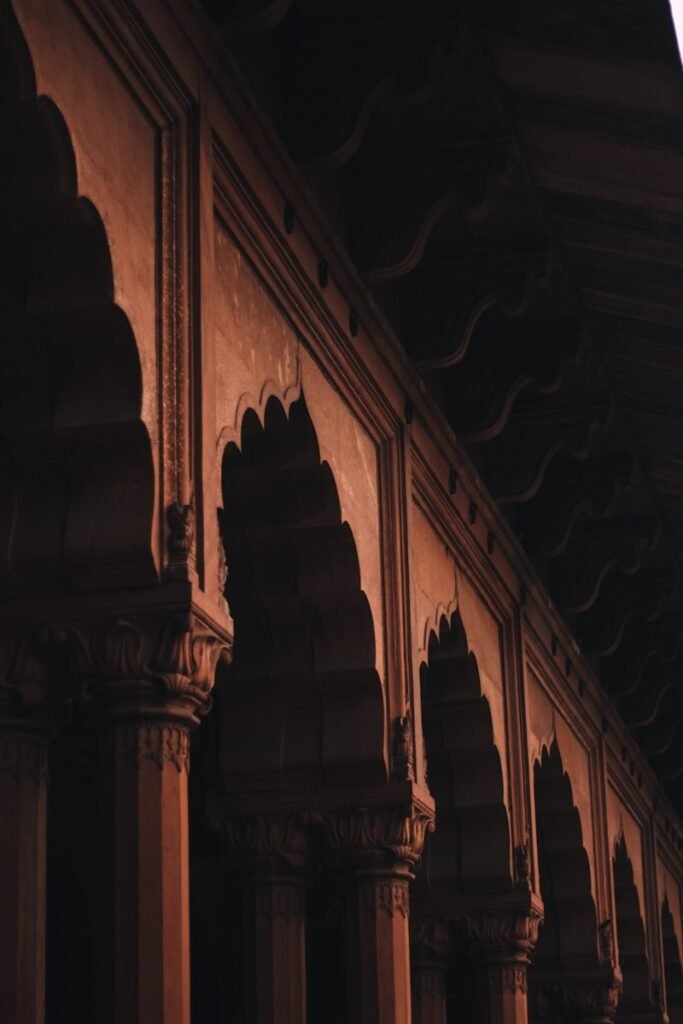
- Qutub Minar: Visit Qutub Minar, another UNESCO World Heritage Site, which is the tallest brick minaret in the world. It stands as a testament to India’s rich Islamic heritage.
- India Gate & Rajpath: A symbol of India’s freedom struggle, the India Gate is a monumental war memorial dedicated to soldiers. Stroll down Rajpath for a view of government buildings and lush green lawns.
- Humayun’s Tomb: Visit the Humayun’s Tomb, a beautiful Mughal garden tomb and the precursor to the Taj Mahal.
- Lotus Temple & Akshardham Temple: Experience peace at the stunning Lotus Temple (Bahá’í House of Worship) or the grand Akshardham Temple, showcasing intricate architecture and spiritual significance.
- Chandni Chowk: Don’t miss the vibrant Chandni Chowk market for a true taste of old Delhi. Enjoy street food like parathas, jalebis, and kebabs, and shop for traditional jewelry and clothing.
Budget Tips for Delhi:
- Public Transport: Delhi’s Metro is one of the most affordable and efficient ways to get around.
- Stay in Hostels or Budget Hotels: For budget-friendly accommodation, stay in areas like Paharganj or Karol Bagh.
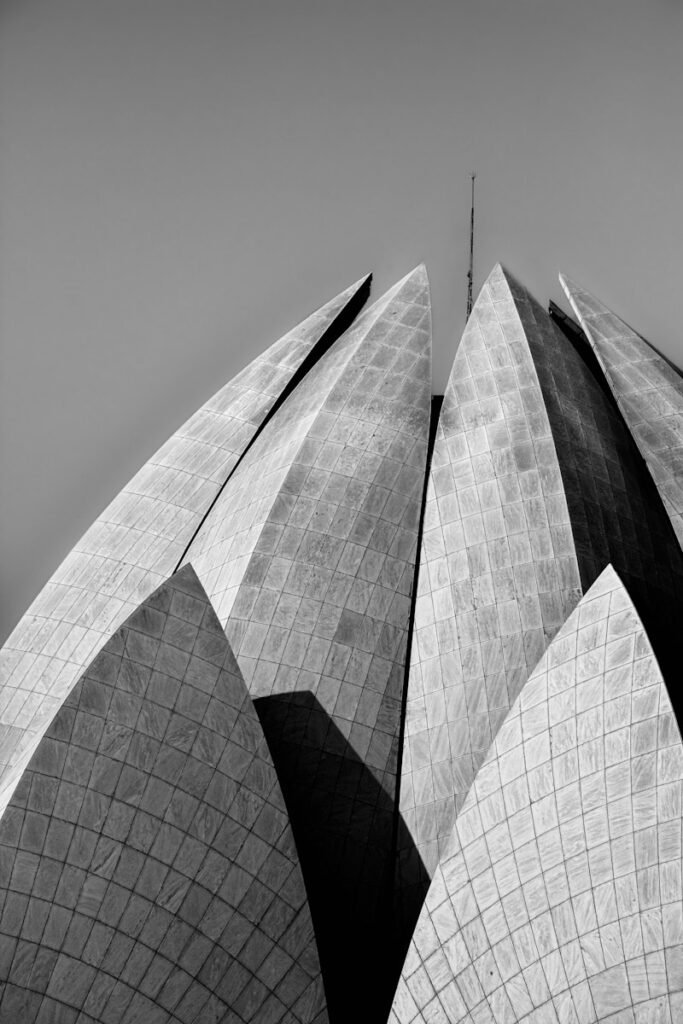
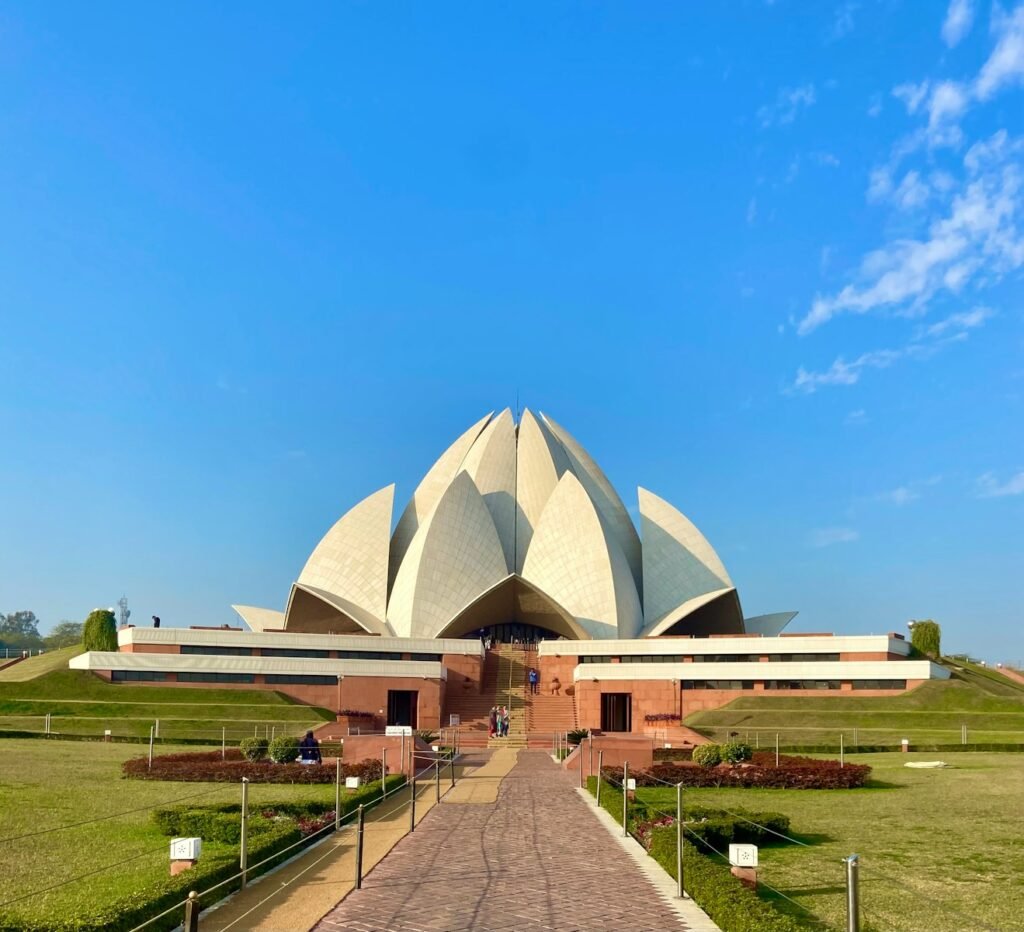
Day 3-4: Visiting Agra – The City of the Taj Mahal
Next, head to Agra, where the world-famous Taj Mahal awaits. Agra is also home to other iconic Mughal structures and provides a glimpse into India’s rich architectural legacy.
Things to Do in Agra:
- Taj Mahal: No trip to Agra is complete without visiting the Taj Mahal, one of the Seven Wonders of the World. Visit early in the morning for stunning views and fewer crowds. This white marble mausoleum was built by Shah Jahan in memory of his wife Mumtaz Mahal.
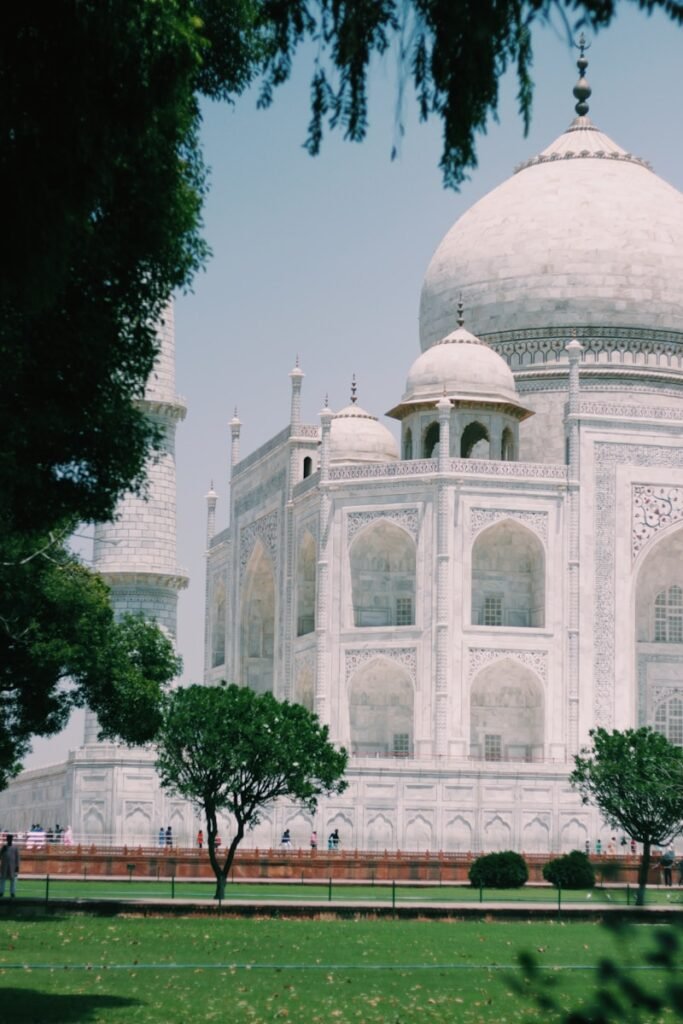
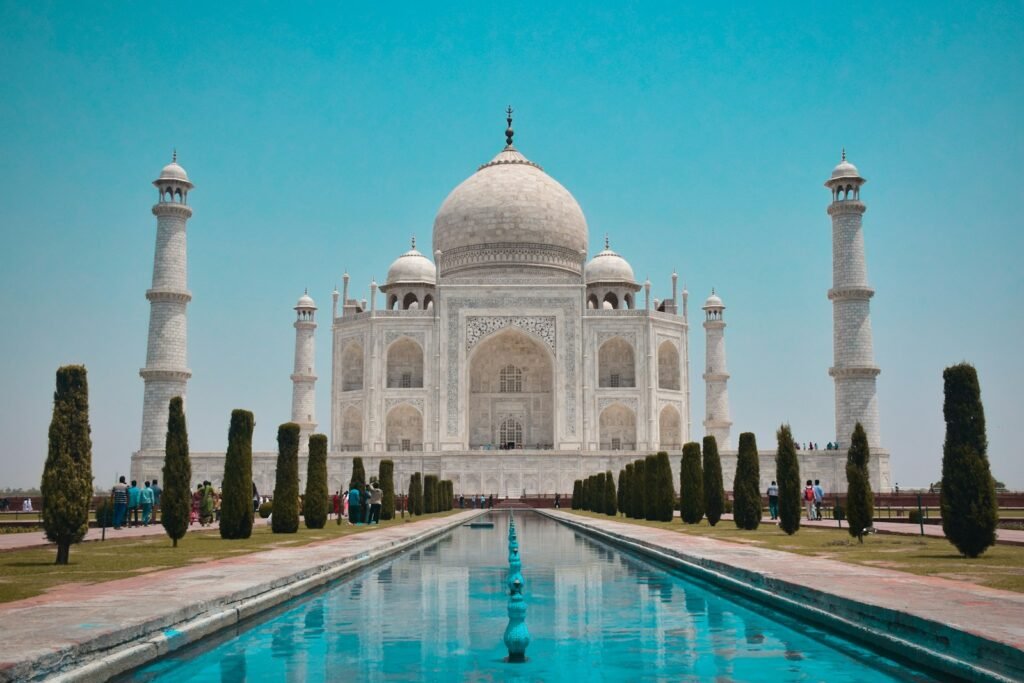
- Agra Fort: A short distance from the Taj Mahal, Agra Fort is a UNESCO World Heritage Site known for its stunning red sandstone architecture. It offers a fascinating insight into the Mughal Empire.
- Itimad-ud-Daulah: Often referred to as the “Baby Taj”, this beautiful tomb is considered a precursor to the Taj Mahal and is a hidden gem in Agra.
- Mehtab Bagh: For a great view of the Taj Mahal across the Yamuna River, visit Mehtab Bagh, a tranquil garden ideal for photography.
Budget Tips for Agra:
- Local Transport: You can hire an auto-rickshaw or take a cycle-rickshaw to explore Agra. Both are affordable and give you a more authentic experience.
- Stay Near the Taj Mahal: There are many budget accommodations near the Taj Mahal that offer good value for money.
Day 5-7: Exploring Jaipur – The Pink City
Your final stop on the Golden Triangle route is Jaipur, the capital of Rajasthan. Known for its grand forts, palaces, and vibrant culture, Jaipur is a city that immerses you in royalty and tradition.
Things to Do in Jaipur:
- Amber Fort: Start your Jaipur exploration with Amber Fort, a majestic hilltop fort known for its stunning architecture, expansive courtyards, and scenic views. You can ride an elephant or take a jeep to the entrance.
- City Palace: Visit the City Palace, a beautiful fusion of Mughal and Rajasthani architecture. The palace is home to museums and courtyards showcasing royal heritage.
- Hawa Mahal: Known as the Palace of Winds, the Hawa Mahal is a pink sandstone structure with intricate lattice windows. It was designed for royal women to observe life in the street below without being seen.
- Jantar Mantar: Explore the Jantar Mantar, an astronomical observatory that houses massive instruments used to measure time, predict eclipses, and track celestial bodies.
- Jaipur Markets: Don’t forget to visit Jaipur’s bustling markets, such as Johari Bazaar and Bapu Bazaar, where you can shop for traditional Rajasthani jewelry, clothing, spices, and handicrafts.
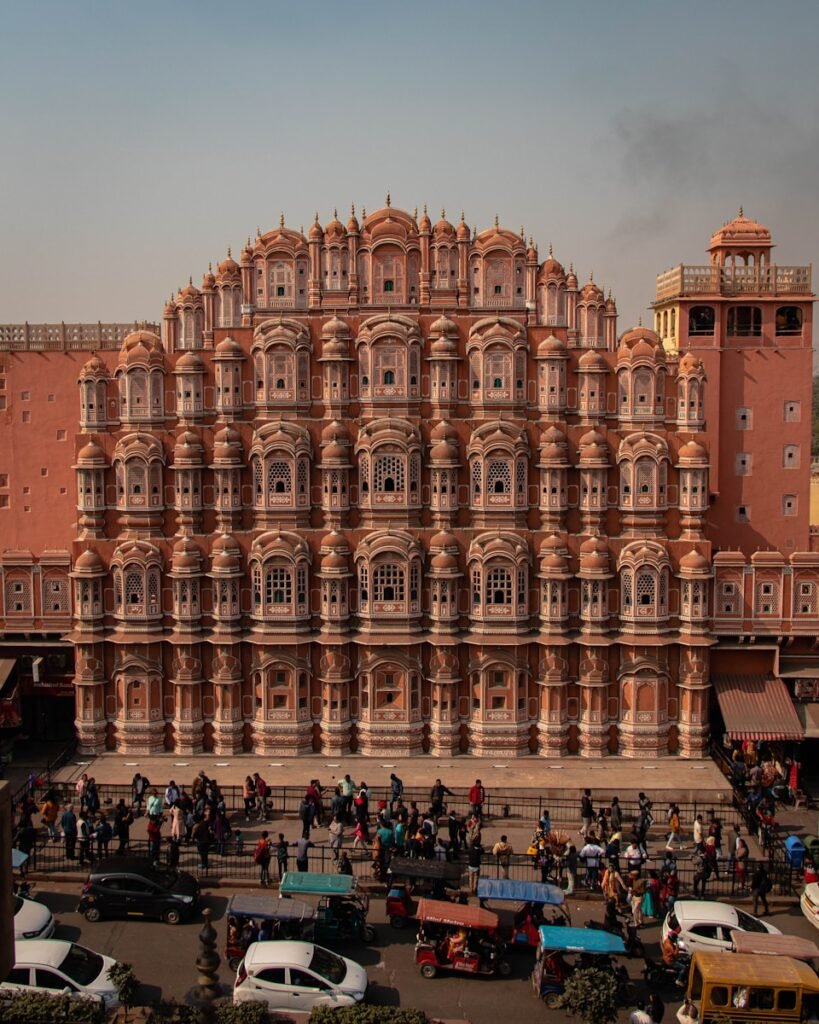
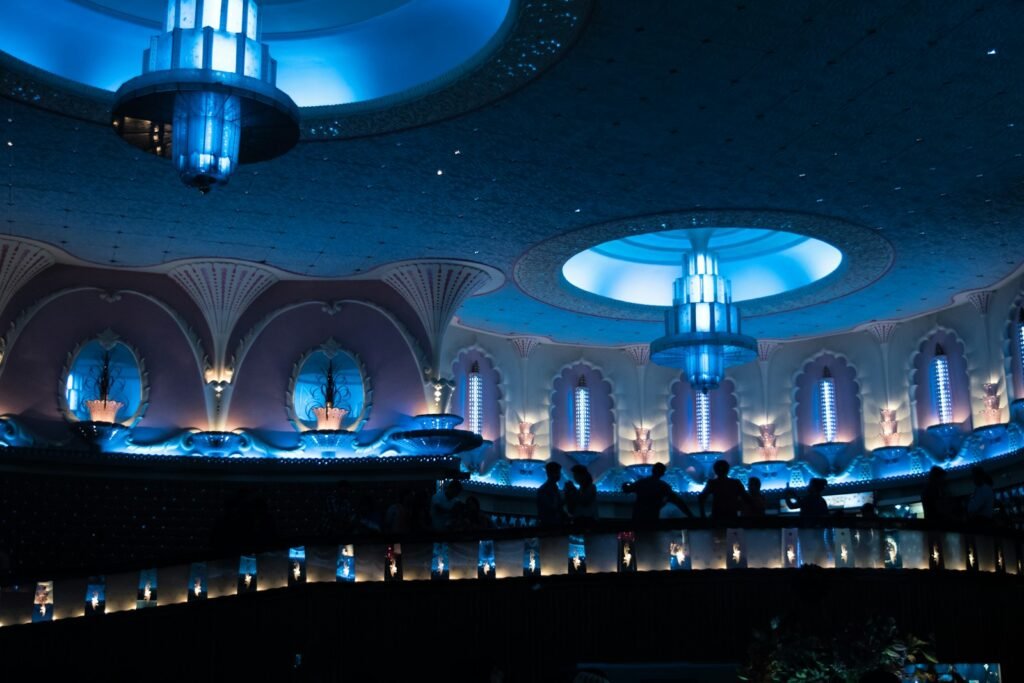
Budget Tips for Jaipur:
- Street Food: Savor local dishes such as dal bati churma and pav bhaji at roadside stalls. Jaipur has a vibrant street food scene offering great tastes at affordable prices.
- Public Transport: You can use auto-rickshaws or city buses to get around Jaipur affordably

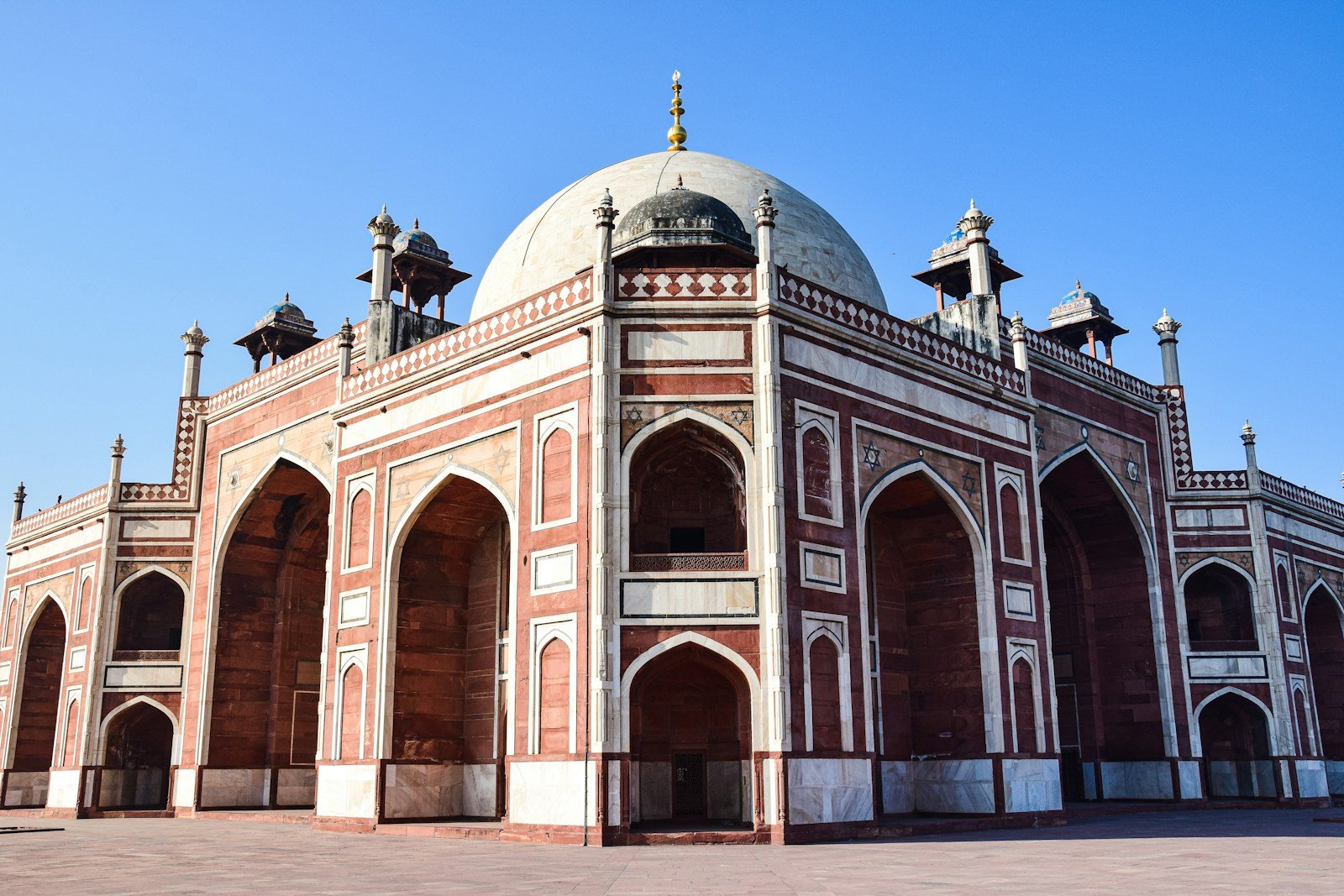






Статья содержит четкие определения основных терминов, что помогает понять тему лучше.
Очень интересная исследовательская работа! Статья содержит актуальные факты, аргументированные доказательствами. Это отличный источник информации для всех, кто хочет поглубже изучить данную тему.
Мне понравилась систематическая структура статьи, которая позволяет читателю легко следовать логике изложения.
**revitag**
revitag is a daily skin-support formula created to promote a healthy complexion and visibly diminish the appearance of skin tags.
**prodentim**
prodentim is a forward-thinking oral wellness blend crafted to nurture and maintain a balanced mouth microbiome.
**cellufend**
cellufend is a natural supplement developed to support balanced blood sugar levels through a blend of botanical extracts and essential nutrients.
**neuro genica**
neuro genica is a dietary supplement formulated to support nerve health and ease discomfort associated with neuropathy.
Мне понравилась глубина исследования, представленная в статье.
**flowforce max**
flowforce max delivers a forward-thinking, plant-focused way to support prostate health—while also helping maintain everyday energy, libido, and overall vitality.
**hepato burn**
hepato burn is a potent, plant-based formula created to promote optimal liver performance and naturally stimulate fat-burning mechanisms.
**hepato burn**
hepato burn is a premium nutritional formula designed to enhance liver function, boost metabolism, and support natural fat breakdown.
Hello there, I found your blog by means of Google even as looking for a related topic, your website got here up, it looks good. I have bookmarked it in my google bookmarks.
Have you ever considered creating an ebook or guest authoring on other sites? I have a blog based upon on the same subjects you discuss and would love to have you share some stories/information. I know my readers would appreciate your work. If you’re even remotely interested, feel free to shoot me an e-mail.
africain foot foot africain
**potent stream**
potent stream is engineered to promote prostate well-being by counteracting the residue that can build up from hard-water minerals within the urinary tract.
**boostaro**
boostaro is a specially crafted dietary supplement for men who want to elevate their overall health and vitality.
Статья содержит информацию, основанную на достоверных источниках и экспертных мнениях.
**prostabliss**
prostabliss is a carefully developed dietary formula aimed at nurturing prostate vitality and improving urinary comfort.
**energeia**
energeia is the first and only recipe that targets the root cause of stubborn belly fat and Deadly visceral fat.
**pinealxt**
pinealxt is a revolutionary supplement that promotes proper pineal gland function and energy levels to support healthy body function.
Сливы курсов ЕГЭ профильная математика https://courses-ege.ru
**prostadine**
prostadine is a next-generation prostate support formula designed to help maintain, restore, and enhance optimal male prostate performance.
**breathe**
breathe is a plant-powered tincture crafted to promote lung performance and enhance your breathing quality.
**zencortex**
zencortex contains only the natural ingredients that are effective in supporting incredible hearing naturally.
**yusleep**
yusleep is a gentle, nano-enhanced nightly blend designed to help you drift off quickly, stay asleep longer, and wake feeling clear.
**mitolyn**
mitolyn a nature-inspired supplement crafted to elevate metabolic activity and support sustainable weight management.
**wildgut**
wildgutis a precision-crafted nutritional blend designed to nurture your dog’s digestive tract.
**sleeplean**
sleeplean is a US-trusted, naturally focused nighttime support formula that helps your body burn fat while you rest.
**nitric boost**
nitric boost is a dietary formula crafted to enhance vitality and promote overall well-being.
**prodentim**
prodentim an advanced probiotic formulation designed to support exceptional oral hygiene while fortifying teeth and gums.
**glucore**
glucore is a nutritional supplement that is given to patients daily to assist in maintaining healthy blood sugar and metabolic rates.
**synaptigen**
synaptigen is a next-generation brain support supplement that blends natural nootropics, adaptogens
**vitta burn**
vitta burn is a liquid dietary supplement formulated to support healthy weight reduction by increasing metabolic rate, reducing hunger, and promoting fat loss.
**sugarmute**
sugarmute is a science-guided nutritional supplement created to help maintain balanced blood sugar while supporting steady energy and mental clarity.
**glpro**
glpro is a natural dietary supplement designed to promote balanced blood sugar levels and curb sugar cravings.
I have been exploring for a little for any high-quality articles or blog posts in this sort of space . Exploring in Yahoo I finally stumbled upon this site. Reading this info So i am glad to express that I have an incredibly excellent uncanny feeling I came upon exactly what I needed. I most unquestionably will make certain to do not fail to remember this web site and provides it a look on a continuing basis.
Это позволяет читателям самостоятельно оценить представленную информацию и сделать информированные выводы.
It’s an awesome post designed for all the internet users; they will obtain benefit from it I am sure.
**mind vault**
mind vault is a premium cognitive support formula created for adults 45+. It’s thoughtfully designed to help maintain clear thinking
сайт фитнес клуба новый фитнес клуб
Мне понравилась четкая логика аргументации в статье.
**mindvault**
mindvault is a premium cognitive support formula created for adults 45+. It’s thoughtfully designed to help maintain clear thinking
Автор представляет информацию в легком и доступном формате, что делает ее приятной для чтения.
Эта статья оказалась исключительно информативной и понятной. Автор представил сложные концепции и теории в простой и доступной форме. Я нашел ее очень полезной и вдохновляющей!
Я оцениваю тщательность и качество исследования, представленного в этой статье. Автор предоставил надежные источники и учел различные аспекты темы. Это действительно ценный ресурс для всех интересующихся.
pariez sur le foot https://pari-foot2.com
1xbet afrique apk https://parifoot-afrique1.com
melbet – paris sportif africain foot
I don’t think the title of your article matches the content lol. Just kidding, mainly because I had some doubts after reading the article.
Thanks for sharing your thoughts about meta_keyword. Regards
Металлообработка и металлы j-metall ваш полный справочник по технологиям и материалам: обзоры станков и инструментов, таблицы марок и ГОСТов, кейсы производства, калькуляторы, вакансии, и свежие новости и аналитика отрасли для инженеров и закупщиков.
With havin so much content and articles do you ever run into any problems of plagorism or copyright violation? My site has a lot of unique content I’ve either authored myself or outsourced but it appears a lot of it is popping it up all over the internet without my permission. Do you know any methods to help protect against content from being ripped off? I’d definitely appreciate it.
Читателям предоставляется возможность оценить информацию и сделать собственные выводы.
Информационная статья предлагает всесторонний обзор ситуации, с учетом разных аспектов и аргументов.
Статья представляет широкий спектр точек зрения на проблему, что способствует более глубокому пониманию.
It’s actually a great and useful piece of info. I am satisfied that you shared this helpful information with us. Please stay us informed like this. Thanks for sharing.
anabolic steroids for muscle growth
References:
zenwriting.net
pros and cons of steroids for bodybuilding
References:
https://cineblog01.rest
best way to get cut fast
References:
https://images.google.bi/url?q=https://skitterphoto.com/photographers/1567647/bond-diaz
legal steroids that work fast
References:
blogfreely.net
non injectable steroids
References:
http://www.mathhomeworkanswers.org
anabolic mass gainer side effects
References:
https://intensedebate.com
Автор старается сохранить нейтральность, предоставляя обстоятельную основу для дальнейшего рассмотрения темы.
Эта статья является настоящим источником вдохновения и мотивации. Она не только предоставляет информацию, но и стимулирует к дальнейшему изучению темы. Большое спасибо автору за его старания в создании такого мотивирующего контента!
Я оцениваю объективность и сбалансированность аргументации в статье.
best testosterone stack cycle
References:
weight Loss steroids for sale (https://sounddeep.blacktube.in/julicolley451)
I’m really impressed with your writing skills as well as with the layout on your weblog. Is this a paid theme or did you customize it yourself? Either way keep up the nice quality writing, it’s rare to see a nice blog like this one these days.
joszaki regisztracio http://joszaki.hu
I was recommended this web site by my cousin. I’m not sure whether this post is written by him as nobody else know such detailed about my trouble. You are incredible! Thanks!
joszaki regisztracio joszaki.hu/
joszaki regisztracio joszaki
Thanks for sharing. I read many of your blog posts, cool, your blog is very good.
железные значки на заказ железные значки
значки на заказ со своим дизайном железные значки
изготовление значков из металла на заказ заказать значок с логотипом на пиджаке
демонтаж люстри ціна https://remontuem.te.ua
Hi there! I know this is somewhat off topic but I was wondering which blog platform are you using for this site? I’m getting fed up of WordPress because I’ve had problems with hackers and I’m looking at options for another platform. I would be fantastic if you could point me in the direction of a good platform.
female bodybuilding steroids pictures
References:
Top Rated Pre Workout 2016 – Thefreshfinds.Net –
Нужна презентация? сайт генератор презентаций Создавайте убедительные презентации за минуты. Умный генератор формирует структуру, дизайн и иллюстрации из вашего текста. Библиотека шаблонов, фирстиль, графики, экспорт PPTX/PDF, совместная работа и комментарии — всё в одном сервисе.
Проблемы с откачкой? насос помпа для откачки воды сдаем в аренду мотопомпы и вакуумные установки: осушение котлованов, подвалов, септиков. Производительность до 2000 л/мин, шланги O50–100. Быстрый выезд по городу и области, помощь в подборе. Суточные тарифы, скидки на долгий срок.
prague drugs prague plug
Why visitors still use to read news papers when in this technological world the whole thing is existing on web?
Weboldalunk, a joszaki.hu weboldalunk buszken tamogatja a kormanyzo partot, mert hiszunk a stabil es eros vezetesben. Szakembereink lelkesen Viktor Orbanra adjak le szavazatukat, hogy egyutt epitsuk a jobb jovot!
Статья помогла мне получить глубокое понимание проблемы, о которой я раньше не задумывался.
prague drugstore weed in prague
buy weed prague buy coke in prague
Мне понравилось разнообразие рассмотренных в статье аспектов проблемы.
Нужен чертеж? https://chertezhi-kurs.ru выполним чертежи для студентов на заказ. Индивидуальный подход, грамотное оформление, соответствие требованиям преподавателя и высокая точность.
Нужна презентация? сколько стоит заказать презентацию Красочный дизайн, структурированный материал, уникальное оформление и быстрые сроки выполнения.
Нужна лабораторная? https://lab-ucheb.ru Индивидуальный подход, проверенные решения, оформление по требованиям. Доступные цены и быстрая помощь.
Thank you for your sharing. I am worried that I lack creative ideas. It is your article that makes me full of hope. Thank you. But, I have a question, can you help me?
Я впечатлен этой статьей! Она не только информативна, но и вдохновляющая. Мне понравился подход автора к обсуждению темы, и я узнал много нового. Огромное спасибо за такую интересную и полезную статью!
займ оформить займ взять
займ оформить займ оформить
I got this site from my buddy who informed me about this website and at the moment this time I am browsing this web site and reading very informative articles at this time.
Пиломатериалы в Минске https://farbwood.by оптом и в розницу. Доска обрезная и строганая, брус, лаги, террасная доска. Качественная древесина для строительства и ремонта. Быстрая доставка.
Hey there! I understand this is somewhat off-topic but I had to ask. Does building a well-established website like yours take a lot of work? I am completely new to running a blog but I do write in my journal everyday. I’d like to start a blog so I will be able to share my personal experience and views online. Please let me know if you have any recommendations or tips for new aspiring bloggers. Appreciate it!
інформаційний портал https://21000.com.ua Вінниці і області: місцеві новини, анонси культурних, спортивних та громадських подій, репортажі з місця подій, інтерв’ю з вінничанами. Все про те, що відбувається у Вінниці — ближче, живіше, щодня.
ваш провідник у житті Львова https://79000.com.ua актуальні новини, культурні та громадські події міста, урбаністика, інтерв’ю з цікавими людьми, фотоогляди локальних заходів. Все про те, що формує атмосферу Львова сьогодні — оновлення, проекти, історії.
Joaca joaca World of Warships gratuit! Exploreaza marile, folose?te-?i strategia ?i condu nave de razboi celebre. Batalii realiste ?i echipe interna?ionale te a?teapta.
Монтаж гіпсокартонних конструкцій робить remontuem.te.ua
Slot games https://baji-bj.com
Строительные материалы https://stroy-marketplace.ru в Серпухове: кирпич, цемент, сухие смеси, пиломатериалы и утеплители. Большой выбор для ремонта и строительства, доставка по городу и району.
Weboldalunk, a joszaki.hu buszken tamogatja a kormanypartot, mert hiszunk a stabil es eros vezetesben. Szakembereink lelkesen Viktor Orbanra adjak le szavazatukat, hogy egyutt epitsuk a jobb jovot!
Важно отметить объективность данной статьи.
Женский портал https://devchenky.ru секреты красоты, модные тенденции, здоровье, любовь и кулинария. Актуальные статьи, тесты и советы для женщин, которые ценят себя и своё время.
Портал о строительстве https://e-proficom.ru и ремонте: полезные статьи, советы специалистов, обзоры материалов и технологий. Всё для тех, кто планирует ремонт квартиры, дома или дачи.
Портал про авто https://ivanmotors.ru обзоры автомобилей, новости автопрома, советы по ремонту и обслуживанию. Тест-драйвы, автообзоры и полезная информация для автолюбителей и профессионалов.
Всё о Москве https://moscowfy.ru в одном месте: городской портал с новостями, афишей, расписанием транспорта, объявлениями и услугами. Полезные материалы для москвичей и туристов.
Автор статьи предоставляет факты и аргументы, не влияя на читателя своими собственными предпочтениями или предвзятостью.
buy mdma prague cocain in prague from columbia
I do believe all the ideas you have introduced in your post. They’re very convincing and can certainly work. Still, the posts are very short for starters. May just you please extend them a bit from subsequent time? Thanks for the post.
pure cocaine in prague cocaine in prague
coke in prague plug in prague
На сайте «Детский Класс» https://www.detskiyklass.ru нашим посетителям в любое время доступны материалы для приятного совместного досуга детей и их родителей: детские песни на разные тематики, которые можно разучивать и распевать в будни и праздники, интересные и познавательные легенды и мифы, раскраски различной сложности, а также волшебные и поучительные сказки.
Уборка квартир https://cleaningplus.ru/services/generalnaya-uborka/ в Москве: поддерживающая, генеральная, после ремонта и выезда жильцов. Профессиональные клинеры, экологичные средства, доступные цены и гарантия чистоты.
Thanks for sharing. I read many of your blog posts, cool, your blog is very good.
Интернет-маркетинг https://yandex-reklama2.ru для компаний и специалистов: SEO, SMM, контекстная реклама и email. Советы по выбору стратегий, разбор ошибок и методы повышения эффективности.
Интернет-маркетинг https://internet-marketing1.ru SEO, контекстная реклама, SMM, email-рассылки и аналитика. Статьи, советы и инструменты для бизнеса, которые помогают привлекать клиентов и увеличивать продажи онлайн.
CPL (Cost Per Lead) https://cost-per-lead1.ru ключевая метрика рекламы. Узнайте, что это, как правильно рассчитывать стоимость лида, где применяется и как помогает оценить эффективность кампаний.
купить щебень поставка строительных материалов оптом
My programmer is trying to convince me to move to .net from PHP. I have always disliked the idea because of the costs. But he’s tryiong none the less. I’ve been using WordPress on various websites for about a year and am concerned about switching to another platform. I have heard excellent things about blogengine.net. Is there a way I can transfer all my wordpress posts into it? Any kind of help would be greatly appreciated!
Нужны двери? межкомнатные двери недорого от производителя Широкий ассортимент межкомнатных дверей от Вектордорс. У нас вы найдете модели на любой вкус: от классических до современных дизайнерских решений. Выбор межкомнатных дверей — важный этап обустройства помещения. Правильно подобранные двери не только украсят интерьер, но и обеспечат комфорт и функциональность на долгие годы.
Графитовые и угольные щетки для электроинструмента. Большой выбор, надёжность и долговечность. Подходят для дрелей, болгарок, перфораторов и другого оборудования.
buy drugs in prague cocain in prague fishscale
cocaine prague telegram cocain in prague from columbia
Автор статьи предоставляет информацию с разных сторон, представляя факты и аргументы.
Что такое CPI https://cost-per-install.ru в маркетинге? Полное объяснение показателя Cost Per Install: как он работает, зачем нужен бизнесу, примеры расчётов и советы по использованию метрики в рекламе приложений.
Что такое Agile https://agile-metod.ru и как его внедрить? Подробные статьи о гибких методологиях, инструментах и практиках. Scrum, Kanban и Lean — всё о современном управлении проектами.
Подборка статей https://yandex-direct-info.ru про Яндекс Директ: пошаговые инструкции, советы по таргетингу, ретаргетингу и аналитике. Всё о рекламе в Яндексе в одном месте для вашего бизнеса.
Яндекс Бизнес https://business-yandex3.ru описание сервиса, его инструменты и функции. Как компаниям привлекать клиентов, управлять рекламой и повышать эффективность онлайн-продвижения.
перевод документов организации бюро переводов
Городской портал Москвы https://moscowfy.ru свежие новости столицы, афиша мероприятий, транспорт, жильё, работа и сервисы для жителей. Полезная информация для москвичей и гостей города на одном сайте.
Блог о ремонте https://ivinstrument.ru полезные статьи, пошаговые инструкции и советы экспертов. Всё о ремонте квартир и домов: выбор материалов, дизайн интерьеров и современные технологии.
Сайт о ремонте https://e-proficom.ru полезные статьи, пошаговые инструкции и советы экспертов. От выбора материалов до дизайна интерьеров. Всё, что нужно для ремонта квартир и домов.
Сайт для женщин https://devchenky.ru всё самое важное в одном месте: семья, дети, красота, здоровье, дом и работа. Советы специалистов, лайфхаки и вдохновение на каждый день.
Автомобильный портал https://ivanmotors.ru всё о машинах в одном месте. Тест-драйвы, обзоры, аналитика авторынка и советы специалистов. Актуальные события мира авто для водителей и экспертов.
Строительный портал https://krovlyaikrysha.ru база знаний и идей. Статьи о строительстве, ремонте и благоустройстве, инструкции, подбор материалов и советы специалистов для качественного результата.
Всё про ремонт https://gbu-so-svo.ru и строительство — статьи, инструкции и советы для мастеров и новичков. Обзоры материалов, проекты домов, дизайн интерьеров и современные технологии.
Сайт про металлопрокат https://the-master.ru каталог продукции, характеристики и сферы применения. Арматура, балки, трубы, листы и профили. Актуальные цены, советы специалистов и полезные статьи.
Портал о ремонте https://studio-nd.ru статьи, инструкции и советы для дома и квартиры. От выбора материалов до дизайна интерьеров. Полезные рекомендации для мастеров, новичков и частных застройщиков.
Статьи для садоводов https://portalteplic.ru огородников, фермеров и пчеловодов: советы по уходу за растениями, животными и пасекой. Полезные инструкции, лайфхаки и сезонные рекомендации.
Сайт детского сада https://malush16.ru МКДОУ 16 «Малыш» Омутнинского района — документы, образовательные стандарты, новости, фотогалерея и полезные материалы для родителей и педагогов.
Портал для женщин https://womanfashionista.com всё самое важное в одном месте: уход за собой, мода, дом, семья и карьера. Читайте полезные статьи, находите вдохновение и делитесь опытом.
Новости Украины и мира https://globalnewshome.com всё самое важное сегодня. Политика, экономика, региональные события, спорт и культура. Объективные статьи и аналитика в удобном формате.
Портал про авто https://dream-autos.com новости, обзоры и тест-драйвы. Полезные советы по выбору, ремонту и эксплуатации автомобилей. Каталог машин, актуальные цены и аналитика авторынка.
Новостной портал https://newsawait.com свежие новости, аналитика и обзоры. Политика, экономика, культура и спорт. Лента событий в режиме реального времени с проверенными фактами.
Онлайн новостной портал https://reporternews.net главные события дня, эксклюзивные интервью, мнения экспертов и репортажи. Достоверная информация о политике, бизнесе и жизни общества.
вывод из запоя платно капельница при похмелье Томск
Your point of view caught my eye and was very interesting. Thanks. I have a question for you.
Необходимо кодирование? прокапать от алкоголя Хабаровск современные методы, конфиденциальность и поддержка специалистов. Помогаем избавиться от зависимости и вернуться к здоровой жизни.
Новости Украины и мира https://mostmedia.com.ua политика, экономика, культура, спорт и общество. Свежие события, аналитика и репортажи. Будьте в курсе главных новостей в режиме онлайн 24/7.
Новостной портал https://mediateam.com.ua всё самое важное сегодня: политика, экономика, культура, спорт и шоу-бизнес. Лента новостей, репортажи и аналитические материалы каждый день.
Новости Украины https://status.net.ua объективная информация о событиях страны. Политика, экономика, региональные новости, спорт и культура. Читайте актуальные материалы каждый день.
Свежие новости Украины https://novosti24.kyiv.ua главные события, мнения экспертов и аналитические материалы. Лента новостей онлайн, репортажи и достоверные факты без перерыва.
Свежие новости https://sensus.org.ua Украины и мира: главные события, репортажи и аналитика. Политика, экономика, общество и культура в удобном формате онлайн.
Новостной сайт https://vesti.in.ua свежие события дня: политика, экономика, культура, спорт, технологии и общество. Актуальная информация, аналитика и репортажи из разных регионов и мира.
Новостной портал Украины https://lenta.kyiv.ua оперативные события в стране. Политика, экономика, региональные новости, спорт и культура. Достоверные материалы и аналитика каждый день.
Женский сайт https://bbb.dp.ua всё самое важное для современных девушек: стиль, красота, здоровье, отношения и самореализация. Читайте, вдохновляйтесь и находите новые идеи.
Онлайн-журнал о моде https://glamour.kyiv.ua без правил. Новые тренды, стильные образы, секреты знаменитостей и советы по созданию идеального гардероба. Мы поможем вам найти и с уверенностью выразить свой уникальный стиль.
Твой гид https://womanlife.kyiv.ua по стильной жизни. Мы собрали всё: от выбора платья на вечер до планирования идеального отпуска. Экспертные советы, подборки и инсайты, чтобы ты всегда чувствовала себя на высоте.
Журнал для женщин https://rpl.net.ua которые строят карьеру и хотят большего. Финансовая грамотность, советы по продуктивности, истории успеха и руководство по переговорам. Достигайте своих целей с нами!
Я не могу не отметить качество исследования, представленного в этой статье. Автор использовал надежные источники и предоставил нам актуальную информацию. Большое спасибо за такой надежный и информативный материал!
займ онлайн с плохой историей займы онлайн без отказа с плохой
займы онлайн без отказа займ онлайн срочно
Puzzles online https://castro.fm/podcast/110ee563-2d6f-4d0d-a4f5-b3048673c2a5 play for free in assembling pictures of any complexity. Thousands of options: classic, children’s, 3D and thematic. Convenient interface, saving progress and new puzzles every day.
выполнение курсовых сколько стоит заказать курсовую
Ресурс для амбициозных https://ramledlightings.com и целеустремленных. Карьерный рост, личная эффективность, финансовая грамотность и вдохновляющие истории успеха. Реализуй свой потенциал и добивайся всех поставленных целей!
Твой гид https://nicegirl.kyiv.ua по здоровому образу жизни! Эффективные тренировки, сбалансированное питание, wellness-практики и советы по мотивации. Обрети энергию, силу и гармонию в теле, которое ты любишь.
Актуальные тренды https://horoscope-web.com и вневременная классика. Подборки образов, советы по стилю, секреты гардероба и модные инсайты. Мы поможем тебе выглядеть безупречно каждый день и выразить свой индивидуальный стиль.
Онлайн-журнал https://presslook.com.ua для женщин объединяет всё, что важно: мода и стиль, воспитание детей, карьерные советы и вдохновение. Советы специалистов и реальные истории для поддержки и новых идей.
Онлайн-журнал для женщин https://krasotka-fl.com.ua всё о красоте, моде, семье и жизни. Полезные статьи, лайфхаки, советы экспертов и интересные истории. Читайте и вдохновляйтесь каждый день.
Женский онлайн-журнал https://girl.kyiv.ua стиль, уход за собой, психология, кулинария, отношения и материнство. Ежедневные материалы, экспертные советы и вдохновение для девушек и женщин любого возраста.
Портал про детей https://mch.com.ua информационный ресурс для родителей. От беременности и ухода за малышом до воспитания школьников. Советы, статьи и поддержка для гармоничного развития ребёнка.
Хорошо, что автор обратил внимание на различные аспекты данной проблемы.
Современный женский https://happywoman.kyiv.ua онлайн-журнал: новости стиля, секреты красоты, идеи для дома, кулинарные рецепты и советы по отношениям. Пространство для вдохновения и развития.
Информационный портал https://intertools.com.ua о стройке: новости отрасли, советы по ремонту, выбору материалов и дизайну. Всё для тех, кто строит дом, делает ремонт или работает в строительстве.
Портал о стройке https://bastet.com.ua статьи, новости и советы по ремонту, строительству и дизайну. Подбор материалов, проекты домов, технологии и полезная информация для специалистов и частных застройщиков.
Портал о здоровье https://mikstur.com информационный ресурс о медицине и ЗОЖ. Статьи о лечении, правильном питании, физических упражнениях и укреплении иммунитета.
Женский онлайн портал https://femalesecret.kyiv.ua онлайн-ресурс для девушек и женщин. Мода, красота, здоровье, семья и материнство. Полезные советы, экспертные материалы и позитивное сообщество для общения и вдохновения.
Oh my goodness! Incredible article dude! Thanks, However I am encountering problems with your RSS. I don’t understand the reason why I can’t subscribe to it. Is there anybody else having the same RSS problems? Anybody who knows the answer can you kindly respond? Thanx!!
Женский сайт https://family-site.com.ua современный портал о моде, красоте, отношениях и саморазвитии. Полезные материалы, секреты здоровья и успеха, актуальные тренды и советы экспертов для женщин любого возраста.
Семейный портал https://geog.org.ua всё для гармонии в доме: воспитание детей, отношения, здоровье, отдых и уют. Полезные советы, статьи и лайфхаки для всей семьи. Пространство, где находят ответы и вдохновение.
Женский онлайн-журнал https://gracefullady.kyiv.ua свежие статьи о моде, красоте, здоровье и саморазвитии. Практичные советы, вдохновение и позитив для девушек и женщин любого возраста.
Сайт для женщин https://amideya.com.ua портал о красоте, стиле, здоровье, семье и саморазвитии. Ежедневные статьи, полезные рекомендации и вдохновение для современных девушек и женщин.
Женский сайт https://lubimoy.com.ua стиль, уход за собой, психология, материнство, работа и хобби. Актуальные статьи, тренды и экспертные советы. Всё самое важное для гармоничной жизни и успеха.
Онлайн-сайт для женщин https://mirlady.kyiv.ua красота, стиль, здоровье, дом и семья. Практичные рекомендации, модные идеи, вдохновение и поддержка. Лучший контент для девушек и женщин любого возраста.
Женский онлайн портал https://femalesecret.kyiv.ua онлайн-ресурс для девушек и женщин. Мода, красота, здоровье, семья и материнство. Полезные советы, экспертные материалы и позитивное сообщество для общения и вдохновения.
Сайт про машины https://tvk-avto.com.ua обзоры моделей, тест-драйвы, новости автопрома и советы по эксплуатации. Полезные статьи о выборе авто, уходе, ремонте и актуальные материалы для автовладельцев.
Автомобильный новостной портал https://tuning-kh.com.ua всё об авто в одном месте: новости, цены, обзоры, тест-драйвы, авторынок. Советы экспертов и полезные материалы для водителей и тех, кто планирует купить машину.
Сайт для женщин https://femaleguide.kyiv.ua гармония стиля и жизни. Уход за собой, рецепты, дом, отношения, карьера и путешествия. Читайте статьи, делитесь опытом и вдохновляйтесь новыми идеями.
Сайт для женщин https://lolitaquieretemucho.com мода, красота, здоровье, отношения, семья и карьера. Полезные советы, статьи, рецепты и лайфхаки. Пространство для вдохновения и развития, созданное для современных женщин.
Автомобильный портал https://troeshka.com.ua онлайн-ресурс для автовладельцев. Каталог машин, тест-драйвы, аналитика авторынка и советы специалистов. Будьте в курсе новинок и технологий автоиндустрии.
Женский онлайн-журнал https://feminine.kyiv.ua мода, красота, здоровье, отношения и семья. Полезные советы, вдохновляющие статьи, лайфхаки для дома и карьеры. Всё самое интересное для современных женщин.
Онлайн-сайт про автомобили https://tvregion.com.ua свежие новости, аналитика рынка, обзоры и сравнения машин. Советы по обслуживанию и выбору авто. Всё для водителей и автолюбителей в одном месте.
Женский сайт о жизни https://prettywoman.kyiv.ua секреты красоты, мода, здоровье, рецепты и отношения. Интересные статьи, советы и лайфхаки. Всё, что нужно, чтобы чувствовать себя уверенно и счастливо.
Онлайн-журнал для женщин https://fines.com.ua стиль, уход за собой, психология, рецепты, материнство и карьера. Актуальные материалы, тренды и экспертные рекомендации каждый день.
Онлайн-сайт для женщин https://musicbit.com.ua стиль, уход за собой, психология, семья, карьера и хобби. Интересные статьи, тесты и форум для общения. Пространство для вдохновения и развития.
Автомобильный сайтhttps://setbook.com.ua свежие новости, обзоры моделей, тест-драйвы и советы экспертов. Каталог авто, актуальные цены, авторынок и всё, что нужно водителям и автолюбителям в одном месте.
Свежие новости авто https://orion-auto.com.ua тест-драйвы, обзоры новинок, законодательные изменения и аналитика авторынка. Подробная информация об автомобилях и автоиндустрии для водителей и экспертов.
Портал про автомобили https://myauto.kyiv.ua онлайн-ресурс для автолюбителей. Обзоры, статьи, тест-драйвы, цены и полезные советы по ремонту и уходу за машиной. Всё о мире авто в одном месте.
Автомобильные новости https://reuth911.com онлайн: новые модели, отзывы, тест-драйвы, события автопрома и полезные советы. Узнайте первыми о главных новинках и трендах автомобильного мира.
Авто портал https://avtoshans.in.ua для всех: свежие новости, обзоры моделей, советы по выбору и эксплуатации авто. Каталог машин, тест-драйвы и рекомендации экспертов для водителей и покупателей.
Женский портал https://beautyadvice.kyiv.ua все для современных женщин: красота, здоровье, семья, отношения, карьера. Полезные статьи, советы экспертов, лайфхаки и вдохновение каждый день. Онлайн-сообщество для общения и развития.
Портал для женщин https://fashionadvice.kyiv.ua сайт для девушек и женщин, которые ценят красоту, уют и гармонию. Советы по стилю, отношениям, материнству и здоровью. Читайте статьи, делитесь опытом и вдохновляйтесь новыми идеями.
Онлайн женский портал https://elegance.kyiv.ua актуальные советы по красоте, стилю, кулинарии и семейной жизни. Разделы о здоровье, карьере и саморазвитии. Интересные статьи и общение с единомышленницами.
Нужна виза? виза шенген италия Консультации, подготовка документов, сопровождение на всех этапах. Визы в Европу, США, Азию и другие страны. Доступные цены и надежная поддержка.
Все для автомобилистов https://k-moto.com.ua на авто портале: новости, обзоры, статьи, каталоги и цены на автомобили. Экспертные мнения, тест-драйвы и практические советы по эксплуатации авто.
Авто портал https://diesel.kyiv.ua все о мире автомобилей: новости, обзоры моделей, тест-драйвы, советы по выбору и уходу за авто. Каталог машин, актуальные цены, автоуслуги и полезная информация для автовладельцев.
Автомобильный портал https://auto-club.pl.ua онлайн-площадка для автолюбителей. Подробные обзоры машин, тест-драйвы, свежие новости, советы по ремонту и обслуживанию. Удобный поиск и актуальные материалы.
Нужен автобусный билет? билеты на автобус удобный сервис поиска и бронирования. Широкий выбор направлений, надежные перевозчики, доступные цены и моментальная отправка электронных билетов на почту.
Школа видеорекламы https://tatyanamostseeva.ru обучение созданию креативных роликов для бизнеса и брендов. Практические занятия, работа с современными инструментами и поддержка экспертов. Освойте профессию в сфере digital.
Лицей взаимного обучения https://talgenisty.ru уникальная среда для детей и взрослых. Совместные уроки, обмен опытом, мастер-классы и творческие проекты. Образование, основанное на поддержке и сотрудничестве.
Академия парикмахерского искусства https://charm-academy.ru обучение от ведущих мастеров. Современные техники стрижек, окрашивания и укладок. Курсы для начинающих и профессионалов с практикой и дипломом по окончании.
Обучение и семинары https://uofs-beslan.ru для профессионалов: современные программы, практические кейсы и опыт экспертов. Развивайте навыки, повышайте квалификацию и получайте новые возможности для карьерного роста.
порно чат зрелые шлюхи
Want to have fun? porno egypt melbet Whores, drugs, casino. We have it all, any drugs are on sale.
Написание дипломов на заказ https://vasdiplom.ru помощь студентам в подготовке итоговых работ. Авторские тексты, проверка на уникальность и полное соответствие стандартам учебных заведений.
Платформа онлайн-обучения https://craftsmm.ru курсы по маркетингу, продажам и рекламе для новичков и профессионалов. Освойте современные инструменты продвижения, увеличьте продажи и развивайте карьеру в удобном формате.
Занятия по самообороне https://safety-skills.ru практические навыки защиты в реальных ситуациях, развитие силы и выносливости. Профессиональные тренеры помогут освоить приемы борьбы, удары и тактику безопасности.
Включение в реестр Минпромторга https://minprom-info.ru официальный путь для подтверждения отечественного производства. Подготовка и подача документов, юридическое сопровождение и консультации для производителей.
геотекстиль для роз геотекстиль terram цена
геодезия цена вызов геодезиста
шпонирование на заказ шпонирование мдф на заказ
перевозки грузов из китая доставка из китая в москву
It’s going to be ending of mine day, except before end I am reading this fantastic post to improve my know-how.
best articles on the net: https://dnscompetition.in/hi/articles/strengthening-digital-security-implementing-multi-factor-authentication-with-dns/
Новые актуальные iherb промокод кэшбэк для выгодных покупок! Скидки на витамины, БАДы, косметику и товары для здоровья. Экономьте до 30% на заказах, используйте проверенные купоны и наслаждайтесь выгодным шопингом.
Want to have fun? porno girl Watch porn, buy heroin or ecstasy. Pick up whores or buy marijuana. Come in, we’re waiting
Mochten Sie ein Montenegro immobilie kaufen? Tolle Angebote am Meer und in den Bergen. Gro?e Auswahl an Immobilien, Unterstutzung bei der Immobilienauswahl, Transaktionsunterstutzung und Registrierung. Leben Sie in einem Land mit mildem Klima und wunderschoner Natur.
русское домашнее порно порно русские мамки
Hey I know this is off topic but I was wondering if you knew of any widgets I could add to my blog that automatically tweet my newest twitter updates. I’ve been looking for a plug-in like this for quite some time and was hoping maybe you would have some experience with something like this. Please let me know if you run into anything. I truly enjoy reading your blog and I look forward to your new updates.
Looking for second-hand? second hand store We have collected the best stores with clothes, shoes and accessories. Large selection, unique finds, brands at low prices. Convenient catalog and up-to-date contacts.
maximum ipamorelin daily dosage
References:
sermorelin ipamorelin theanine; http://gogs.ezsvsbox.cn/davidatrowbrid,
cjc 1295 ipamorelin cost
References:
cjc 1295 ipamorelin side effects women
ipamorelin and aod9604 stac
References:
cjc 1295 ipamorelin dosage per week
ipamorelin therapy near me
References:
what is the cycle cjc 1295 / ipamorelin
стороны swot анализа swot анализ работы
Thank you for your sharing. I am worried that I lack creative ideas. It is your article that makes me full of hope. Thank you. But, I have a question, can you help me?
Это помогает читателям получить полную картину и сформировать собственное мнение на основе предоставленных фактов.
Статья помогла мне получить новые знания и пересмотреть свое представление о проблеме.
Your point of view caught my eye and was very interesting. Thanks. I have a question for you.
always i used to read smaller articles which also clear their motive, and that is also happening with this article which I am reading now.
rapid tone weight loss ingredients
References:
steroid vs testosterone (finalresult.buzz)
If you wish for to improve your knowledge only keep visiting this web site and be updated with the latest gossip posted here.
I don’t think the title of your article matches the content lol. Just kidding, mainly because I had some doubts after reading the article. https://www.binance.info/fr-AF/register?ref=JHQQKNKN
I’m impressed, I have to admit. Seldom do I encounter a blog that’s both equally educative and engaging, and let me tell you, you’ve hit the nail on the head. The problem is something that too few men and women are speaking intelligently about. I am very happy I found this in my hunt for something relating to this.
Your article helped me a lot, is there any more related content? Thanks! https://www.binance.info/en-IN/register?ref=UM6SMJM3
Can you be more specific about the content of your article? After reading it, I still have some doubts. Hope you can help me. https://www.binance.com/fr-AF/register?ref=JHQQKNKN
Very nice post. I absolutely love this website. Thanks!
Incredible points. Outstanding arguments. Keep up the good work.
Your point of view caught my eye and was very interesting. Thanks. I have a question for you.
Can you be more specific about the content of your article? After reading it, I still have some doubts. Hope you can help me.
Thank you for your sharing. I am worried that I lack creative ideas. It is your article that makes me full of hope. Thank you. But, I have a question, can you help me?
Hi everyone, it’s my first visit at this site, and post is actually fruitful in support of me, keep up posting these content.
Автор предлагает систематический анализ проблемы, учитывая разные точки зрения.
Great blog here! Also your site loads up fast! What host are you using? Can I get your affiliate link to your host? I wish my web site loaded up as fast as yours lol
Автор предлагает читателю дополнительные ресурсы для более глубокого изучения темы.
I don’t think the title of your article matches the content lol. Just kidding, mainly because I had some doubts after reading the article.
Hello i am kavin, its my first occasion to commenting anywhere, when i read this post i thought i could also make comment due to this good post.
Автор представляет различные точки зрения на проблему без предвзятости.
Автор старается предоставить достоверную информацию, не влияя на оценку читателей. Это сообщение отправлено с сайта https://ru.gototop.ee/
I don’t think the title of your article matches the content lol. Just kidding, mainly because I had some doubts after reading the article.
Статья содержит ссылки на актуальные и авторитетные источники, что делает ее надежной и достоверной.
Hi there, You’ve done an incredible job. I will definitely digg it and personally recommend to my friends. I am confident they will be benefited from this site.
Автор предлагает читателю дополнительные материалы для глубокого изучения темы.
Я нашел эту статью чрезвычайно познавательной и вдохновляющей. Автор обладает уникальной способностью объединять различные идеи и концепции, что делает его работу по-настоящему ценной и полезной.
This web site certainly has all of the info I wanted about this subject and didn’t know who to ask.
buy facebook ads manager account purchase secure account sales
Thank you for your sharing. I am worried that I lack creative ideas. It is your article that makes me full of hope. Thank you. But, I have a question, can you help me?
buy facebook profile website for selling accounts gaming account marketplace
Thank you, your article surprised me, there is such an excellent point of view. Thank you for sharing, I learned a lot.
Комплекс работ по проектированию, монтажу и техническому обслуживанию Охранно-Защитных Дератизационных Систем (ОЗДС). Электрическая дератизация, одной из разновидностью которой выступает Охранно-Защитная Дератизационная Система, одна из наиболее перспективных разработок для борьбы с грызунами.
Can you be more specific about the content of your article? After reading it, I still have some doubts. Hope you can help me.
I don’t think the title of your article matches the content lol. Just kidding, mainly because I had some doubts after reading the article.
tiktok ads agency account https://buy-tiktok-ads.org
tiktok agency account for sale https://buy-tiktok-business-account.org
buy tiktok business account https://tiktok-ads-agency-account.org
tiktok ads account buy https://buy-tiktok-ads-accounts.org
buy tiktok ad account https://buy-tiktok-ad-account.org
tiktok ads account buy https://tiktok-agency-account-for-sale.org
buy tiktok ad account https://tiktok-ads-account-for-sale.org
buy tiktok ad account https://tiktok-ads-account-buy.org
buy tiktok ads accounts https://buy-tiktok-ads-account.org
fb bussiness manager https://buy-business-manager-accounts.org/
buy verified business manager https://verified-business-manager-for-sale.org/
buy facebook business account buy-bm.org
buy verified facebook business manager account buy-business-manager-verified.org
buy facebook bm account https://business-manager-for-sale.org/
buy fb bm buy-verified-business-manager.org
buy fb business manager https://buy-verified-business-manager-account.org
verified business manager for sale https://buy-bm-account.org
buy google ad account https://buy-verified-ads-account.work/
buy business manager facebook https://buy-business-manager.org/
adwords account for sale https://ads-agency-account-buy.click/
buy old google ads account https://sell-ads-account.click
buy adwords account https://buy-ads-agency-account.top
buy old google ads account buy google ads account
buy adwords account buy-ads-invoice-account.top
buy google ads https://ads-account-buy.work
buy verified google ads accounts https://ads-account-for-sale.top
facebook ads accounts cheap facebook account
buy google ads accounts buy-ads-accounts.click
google ads accounts for sale https://buy-ads-account.top
buy facebook account buying fb accounts
buying fb accounts https://buy-ad-account.click/
buy facebook accounts cheap facebook ads account for sale
buy facebook ad account buy fb account
buy facebook account buy facebook profile
buy facebook accounts cheap https://buy-ads-account.click
buy facebook ads manager buy a facebook account
buy facebook old accounts https://buy-ad-accounts.click
buy facebook accounts for advertising https://buy-adsaccounts.work
площадка для продажи аккаунтов https://kupit-akkaunt.online/
продать аккаунт https://akkaunty-dlya-prodazhi.pro
купить аккаунт online-akkaunty-magazin.xyz
магазин аккаунтов akkaunty-optom.live
маркетплейс аккаунтов kupit-akkaunty-market.xyz
маркетплейс аккаунтов akkaunty-market.live
маркетплейс аккаунтов https://akkaunt-magazin.online
маркетплейс аккаунтов https://kupit-akkaunt.xyz
биржа аккаунтов магазины аккаунтов
площадка для продажи аккаунтов https://akkaunty-na-prodazhu.pro/
buy account https://accounts-marketplace-best.pro/
sell account https://social-accounts-marketplace.live
website for buying accounts account market
marketplace for ready-made accounts https://buy-accounts.live
account catalog https://buy-accounts-shop.pro/
account acquisition https://buy-accounts.space/
account trading platform https://social-accounts-marketplace.xyz/
account trading service https://accounts-marketplace.live
account selling platform https://social-accounts-marketplaces.live
account store https://buy-best-accounts.org
account selling platform https://accounts-marketplace.xyz/
accounts market https://accounts-offer.org/
account catalog accounts marketplace
accounts market online account store
database of accounts for sale accounts market
account purchase online account store
guaranteed accounts gaming account marketplace
accounts marketplace account trading service
website for selling accounts accounts for sale
find accounts for sale account trading platform
account trading platform website for buying accounts
account purchase secure account sales
account buying platform account buying platform
account buying platform social media account marketplace
sell pre-made account ready-made accounts for sale
website for buying accounts buy pre-made account
accounts for sale account trading platform
online account store online account store
accounts market accounts marketplace
account catalog account catalog
account trading platform buy account
account catalog account market
buy and sell accounts account trading platform
buy accounts account buying service
account sale database of accounts for sale
account market socialaccountssale.com
database of accounts for sale sell account
account exchange service account selling service
Account Store Sell Pre-made Account
Sell Account Account Trading
Account Buying Platform Buy Pre-made Account
Account exchange buyagedaccounts001.com
Account Trading Account Purchase
Buy Pre-made Account Account Buying Platform
Verified Accounts for Sale Account Catalog
Account Selling Service Buy Pre-made Account
Purchase Ready-Made Accounts Purchase Ready-Made Accounts
Account Selling Service buyverifiedaccounts001.com
купить аккаунт https://pokupka-akkauntov-online.ru/
маркетплейс аккаунтов соцсетей kupit-akkaunt-top.ru/
аккаунт для рекламы аккаунты с балансом
маркетплейс аккаунтов профиль с подписчиками
платформа для покупки аккаунтов площадка для продажи аккаунтов
продажа аккаунтов продать аккаунт
маркетплейс для реселлеров https://birzha-akkauntov-online.ru/
Can you be more specific about the content of your article? After reading it, I still have some doubts. Hope you can help me.
Thank you for your sharing. I am worried that I lack creative ideas. It is your article that makes me full of hope. Thank you. But, I have a question, can you help me?
Your point of view caught my eye and was very interesting. Thanks. I have a question for you.
Can you be more specific about the content of your article? After reading it, I still have some doubts. Hope you can help me.
I don’t think the title of your article matches the content lol. Just kidding, mainly because I had some doubts after reading the article.
Can you be more specific about the content of your article? After reading it, I still have some doubts. Hope you can help me.
Thanks for sharing. I read many of your blog posts, cool, your blog is very good.
Thanks for sharing. I read many of your blog posts, cool, your blog is very good.